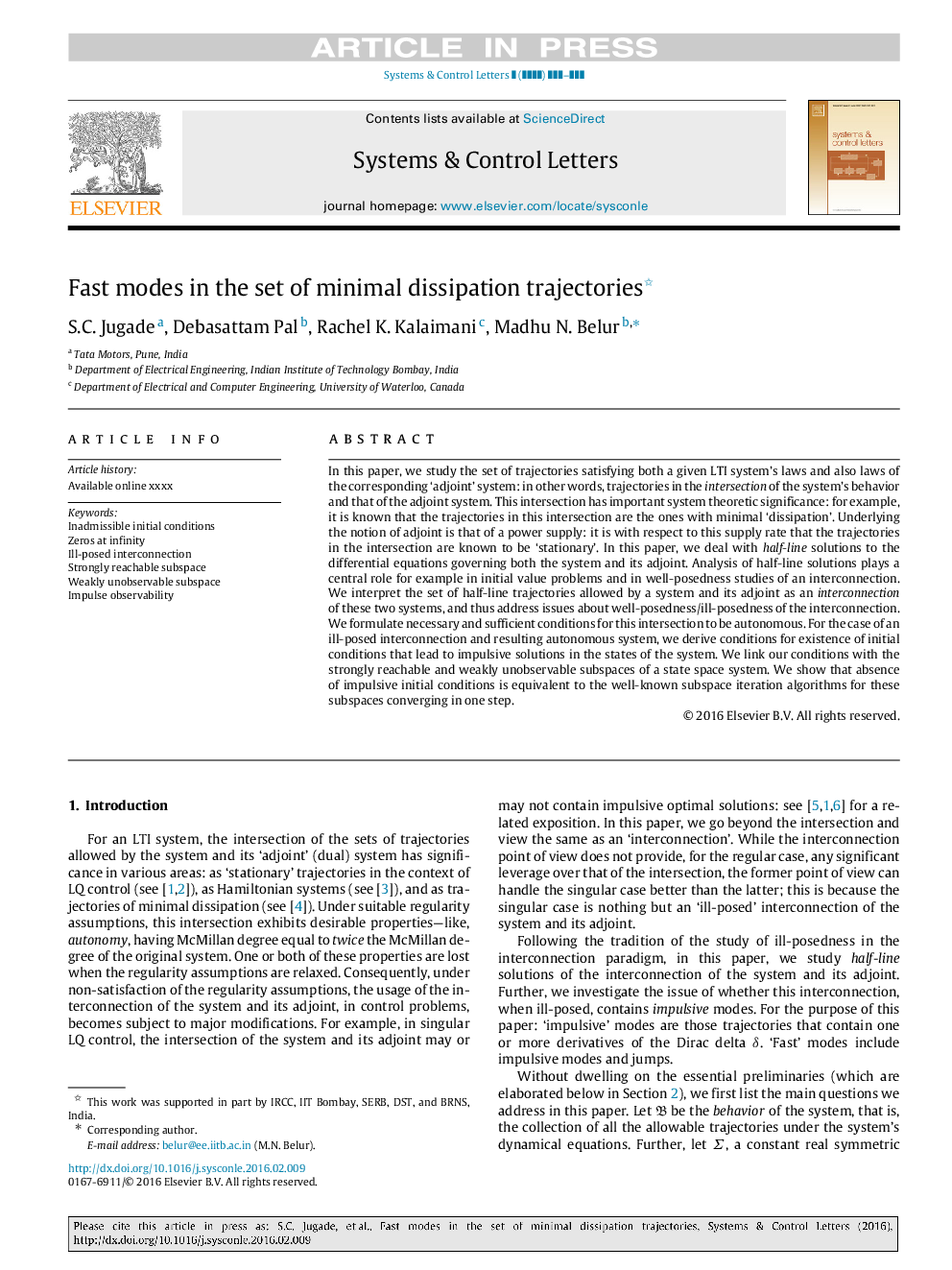| Article ID | Journal | Published Year | Pages | File Type |
|---|---|---|---|---|
| 5010496 | Systems & Control Letters | 2017 | 9 Pages |
Abstract
In this paper, we study the set of trajectories satisfying both a given LTI system's laws and also laws of the corresponding 'adjoint' system: in other words, trajectories in the intersection of the system's behavior and that of the adjoint system. This intersection has important system theoretic significance: for example, it is known that the trajectories in this intersection are the ones with minimal 'dissipation'. Underlying the notion of adjoint is that of a power supply: it is with respect to this supply rate that the trajectories in the intersection are known to be 'stationary'. In this paper, we deal with half-line solutions to the differential equations governing both the system and its adjoint. Analysis of half-line solutions plays a central role for example in initial value problems and in well-posedness studies of an interconnection. We interpret the set of half-line trajectories allowed by a system and its adjoint as an interconnection of these two systems, and thus address issues about well-posedness/ill-posedness of the interconnection. We formulate necessary and sufficient conditions for this intersection to be autonomous. For the case of an ill-posed interconnection and resulting autonomous system, we derive conditions for existence of initial conditions that lead to impulsive solutions in the states of the system. We link our conditions with the strongly reachable and weakly unobservable subspaces of a state space system. We show that absence of impulsive initial conditions is equivalent to the well-known subspace iteration algorithms for these subspaces converging in one step.
Keywords
Related Topics
Physical Sciences and Engineering
Engineering
Control and Systems Engineering
Authors
S.C. Jugade, Debasattam Pal, Rachel K. Kalaimani, Madhu N. Belur,
